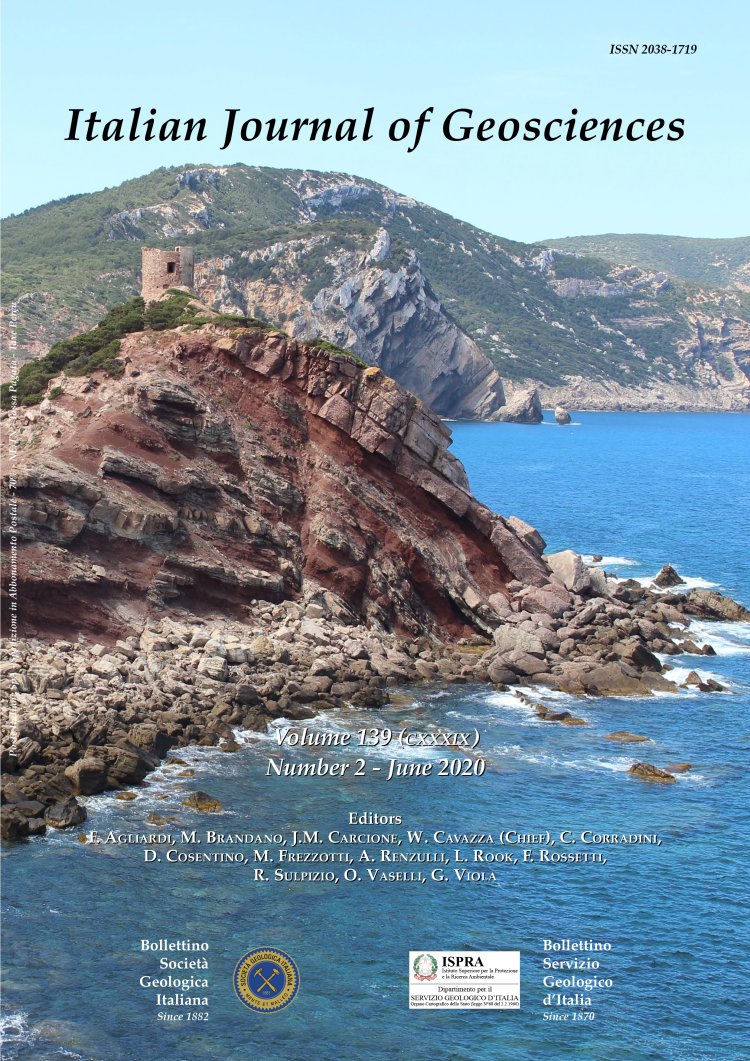
The Roccacaramanico Conglomerate (Maiella Tectonic Unit) in the frame of the Abruzzo early Pliocene Foreland Basin System: stratigraphic and structural implications
Francesco Brozzetti (1,2), Francesca Cerritelli (3), Daniele Cirillo (1,2), Silvano Agostini (4) & Giusy Lavecchia (1,2)
(1) DiSPUTer- Dipartimento di Scienze Psicologiche, della Salute e del Territorio, Università "G. d'Annunzio" Chieti-Pescara, Italy.
(2) CRUST- Centro InteRUniversitario per l’Analisi SismoTettonica tridimensionale, Italy.
(3) Freelance, Viale Amendola 108, 66020 San Giovanni Teatino - Chieti.
(4) Soprintendenza Archeologia, Belle arti e Paesaggio dell'Abruzzo, Via degli Agostiniani, 14, 66100, Chieti.
Corresponding authors e-mail: d.cirillo@unich.it
Volume: 139 (2020) f.2
Pages: 266-286
Abstract
In the upper Tertiary succession of the Maiella Tectonic Unit (Abruzzo, Italy), coarse calciclastic layers, hereafter referred to as Roccacaramanico Conglomerate (RCC), were deposited during a short time span which approximates the Miocene-Pliocene boundary. The biostratigraphy of the RCC is well constrained by previous studies of foraminifer and nannofossil assemblages. The pelitic interbeds of the RCC are attributed to the Sphaeroidinellopsis spp. Biozone and to the MNN12 Nannofossil Zone belonging to the earliest Pliocene.
Previous works considered this conglomerate as the product of Apennine-sourced sediment gravity-flows however, in the absence of detailed compositional data and regional-scale sedimentological study, only generic hypotheses on the source area and on the nature of the event which triggered the RCC deposition, were formulated.
Here we present the results of an original investigation on the RCC cropping out within the Maiella Tectonic Unit, in the area delimited westward by the Morrone-Porrara thrust and southeastward, by the Molise allochthonous Units.
In this area, a fairly continuous RCC horizon, exposed on both limbs of the Maiella anticline, was mapped and logged in detail. Our lithostratigraphic analysis allowed to make hypotheses on depositional mechanisms of RCC and revealed that it consists of several (six to ten) major depositional units producing locally amalgamated pluri-metric clastic layers.
Our facies analysis highlighted that previous studies had generally underestimated the overall thickness of the layers and that in the southernmost examined outcrops (Palena, Taranta Peligna and Lama dei Peligni), the RCC is characterized by higher thickness, coarser grain-size, poorer sorting and more pronounced channeling compared to the outcrops in northernmost areas (Roccacaramanico, San Nicolao and San Valentino). The recognition of facies-types characterized by greater proximality in the southern Maiella area, and the overall geometric reconstruction of the depositional architecture of the RCC horizon, suggests that, contrary to what was previously assumed, the major sediment gravity-flows were fed from the south-eastern edge of the basin. This result is also confirmed by the paleocurrent data, NNW-directed paleoflows.
The compositional analysis of the RCC highlighted an almost totally calcareous composition of the clasts and a poor and scattered siliciclastic fraction, mainly occurring as fine grained matrix. Clasts showing inner platform, bio-constructed margin, ramp, transitional and basinal facies, of different ages, are mixed throughout the layers. Nevertheless, these data allowed us to make inferences on the provenance of the sediment supply and on the stratigraphic successions that were undergoing erosion in the area surrounding the basin, around the Messinian-Pliocene boundary.
Keywords
central Apennines, foreland basin system, Miocene/Pliocene boundary, calcareous-clastic gravity flows, mega-bed volume estimate.
Get Full Text Supplementary Material